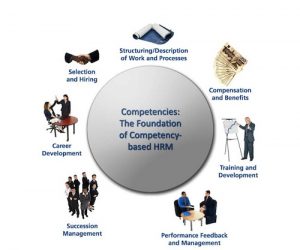Three Types of Human Resources Documents That Need To Be Translated
By Sarah-Claire Jordan
 The human resource management department of any given company or organization can sometimes get overlooked when one is looking to optimize and improve a business. However, it should be the first department to be looked at under a microscope as it is in charge of figuring out ways to keep team members satisfied and productive. Most problems within a company or organization stem from a low level of team member satisfaction, which has a direct effect on their productivity and output. It is in the head of an organization or company’s best interest to make sure the human resource management is doing its best to keep team members happy and everything running smoothly.
The human resource management department of any given company or organization can sometimes get overlooked when one is looking to optimize and improve a business. However, it should be the first department to be looked at under a microscope as it is in charge of figuring out ways to keep team members satisfied and productive. Most problems within a company or organization stem from a low level of team member satisfaction, which has a direct effect on their productivity and output. It is in the head of an organization or company’s best interest to make sure the human resource management is doing its best to keep team members happy and everything running smoothly.
The business world is now so international and globalized that we can’t count on all of our team members to be native English speakers or even speak it fluently. Different positions will call for different levels of English for the tasks, but if the company is predominantly English-speaking, it is imperative to make sure these team members understand as much about the company as anyone else. The best way to do that is to make sure as many human resource management documents as possible are translated accurately into these team members mother languages. Here are three categories of documents that should be translated first
1. Team member manuals/training information
The most important thing for a new team member to have a good understanding of is their role in the company or organization. Manuals for specific positions need to be translated into the native language of a team member who doesn’t speak English as a first language so that they can perform their job as well as any other team member. Training information goes along with this, though it tends to be a bit more general and less position-specific. Either way, any documents that fall into this category should be translated first and by an experienced translator who specializes in human resource management documents.
2. Workplace safety information
Some of this information may or may not be covered in training materials, but sometimes it is a totally separate category of documents. Once a new team member understands their role in a company or organization, they need to know how to stay safe while they work. This information will vary greatly depending on the type of job, but even if it is an office job, all team members need to have a good idea of how to keep themselves and others safe while they work, regardless of their native language. Knowing this information through and through will also help prevent issues regarding team members who get hurt on the job. If they understand all of the safety regulations, they should be able to avoid any issues, but if they don’t understand something, you might have to deal with a huge problem.
3. Health insurance information
Finally, health insurance information is extremely important to have translated into the different languages spoken by team members. Human resource management staff can’t exactly call up an interpreter every time they have an issue communicating with a team member who has trouble communicating in English. Having material like this available will allow those team members to take some time and read about the insurance policies they can choose from and what they offer. They can then take time to think of any questions they might have in English and ask a human resources staff member to clarify. This will help to keep team member satisfaction at a good level, as they will be able to understand the health insurance system they are provided with.
For an overview of our translation expertise, visit our legal translation service page.
Category: Translation Services








